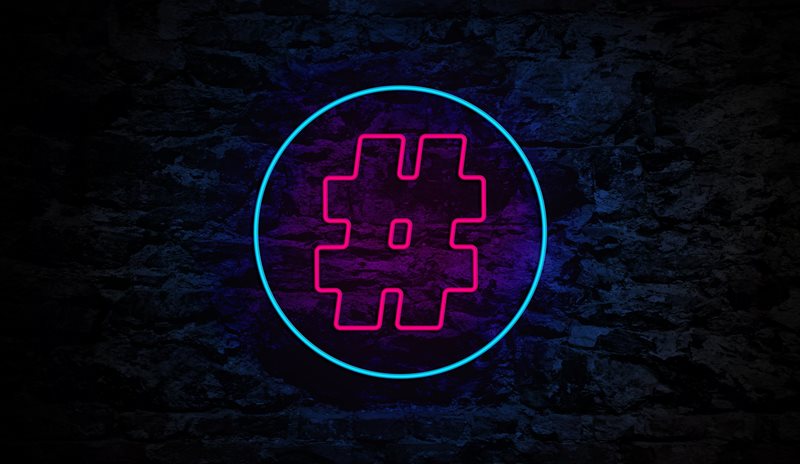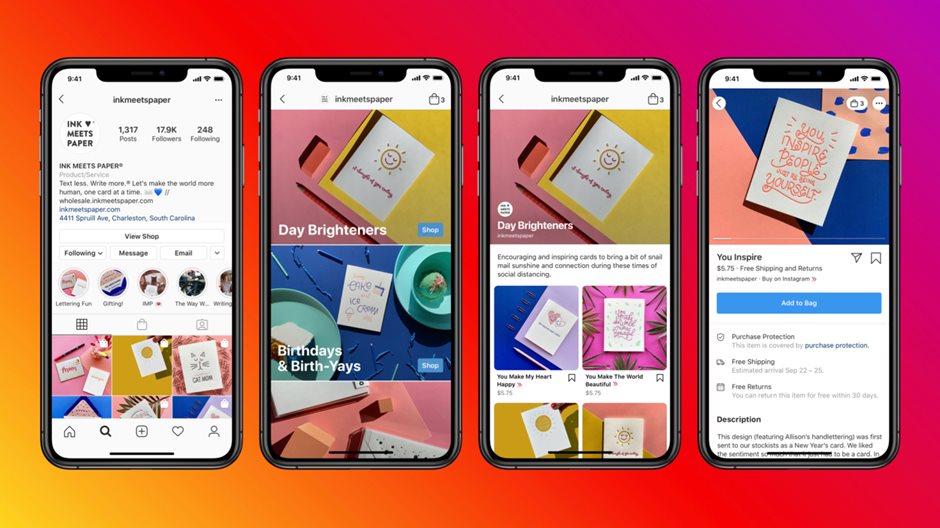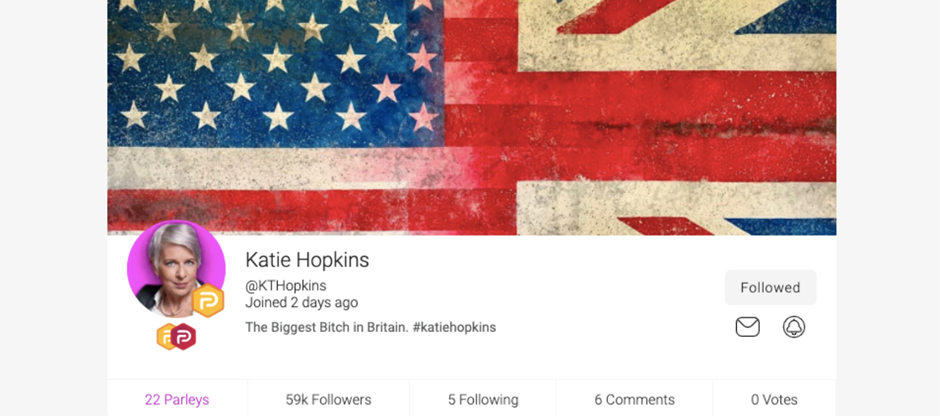
Well, what a year. With everything that happened, 2020 managed to simultaneously felt like it was three years long, yet March seems like it was only yesterday (I for one am certainly not counting this year and choosing to remain a spritley 35 years old.)
But, despite a year like no other, one thing is certain. Whether it was the global COVID-19 pandemic, the US elections, or the seemingly unstoppable rise of TikTok, 2020 dramatically altered the social media and digital landscape.
What does all that mean for the future? These events will all have lasting ramifications, the ripples of which will reach far and wide. Sometimes, end-of-year predictions and trend forecast pieces can feel like filler. An easy bit of content to write at the end of the year, half-heartedly bashed out between Secret Santa and the office party. But not this year. Oh no. This year is legitimately different (and not just because Secret Santa’s been cancelled). Real change is happening. And we’re here to explain what that is and what it means for social media and your brand heading into 2021.
So, mute your mic, turn the zoom camera off and settle in for our look at what’s shaping the social media and digital marketing landscape in 2021.
VIDEO, BUT NOT AS WE KNEW IT
Video’s a big deal? Who knew, right? 2016 called, it wants its blog back, etc. But, jokes aside, stick with us here, because video is having another moment.
With the world in the grip of a pandemic and various lockdowns, quarantines and curfews imposed around the globe, it will come as no surprise to hear that social media usage and screen time was up significantly in 2020 (hands up if you too felt personally attacked by your phone’s weekly screen time report. Up 83% you say? #nailingit). And, with more time to spend browsing social, users increasingly turned to video content – something we expect to continue well into 2021.
As well as your usual fun viral videos – no, not you Gal Gadot – users were engaging with less traditional formats and, now ingrained, those habits will be hard to shift. The biggest winner here was undoubtedly TikTok. 2020’s most-downloaded non-gaming app was a lockdown sensation, as users, influencers, celebrities and our own Head of Digital flocked to the platform in their thousands.
And, even as lockdown restrictions end, those users are sticking around. The average user now spends a massive 62 minutes a day on the channel and, with the highest engagement rate per post of any social networks, trends on TikTok are defining mainstream culture, and the platform is huge in fashion & beauty. In short, it’s one that absolutely needs to be in the thoughts of any brand plotting their social strategy for the year ahead.
While this seems like a good place to plug our guide to getting started on TikTok and mention we’re a TikTok partner, we understand that for some brands, it just might not be right or possible to commit to TikTok right now. And that’s fine. No judgement. But, if it is simply a resource issue, then perhaps a solution has arrived in the form of Reels by Instagram.
Launched at the start of autumn, some brands are already averaging 2M views on their Reels. So, while it doesn’t yet offer the same range of creators, creative editing options or sounds (more on that later), it promises to be a great alternative for time/resource-poor brands who already have an Instagram account and an established fanbase on the platform.
But it isn’t just TikTok and short form video in the midst of a boom. Live video is back, baby! Oh yes – who else remembers the onslaught of Instagram notifications at 8pm each evening during lockdown as every brand and his dog ‘went live’? While that has subsided somewhat, Facebook, Instagram and YouTube have seen a 70% increase in the use of their live features. For many brands, lockdown was the push they needed to start effectively use live streaming, from live masterclasses & product demos, to roundtable discussions. More authentic and engaging than a pre-recorded video or simple grid post, we expect live video to continue to thrive in 2021, with more brands becoming comfortable and at ease with the format.

We also expect video usage through the likes of Messenger and WhatsApp to grow, as brands continue to run product consultations, appointments and more with those users self-isolating or not yet ready to return to the shops. Speaking of shops…
SOCIAL COMMERCE
Ecommerce now makes up 40% of the UK’s retail market, and finding a way to get users shopping on their platforms has long been a goal of the social networks. Developments at the end of 2020 mean 2021 could be the year of social commerce.
Consumers are already making more purchases through social than ever before, with 38% of people saying they’d purchased something based on a social ad in the previous 30 days – the highest that number has ever been. Now, a recent redesign of the Instagram homepage has made their intentions clear, with the notifications tab at the bottom replaced by a shopping tab in a clear sign of the times.
How effective this redesign proves to be remains to be seen, although you wouldn’t bet against our algorithm overlords to make it work. But it follows hot on the heels of another shopping feature, storefronts, fast-tracked onto Facebook and Instagram during the pandemic. These allow brands and business to recreate the ecommerce shopping experience of their website within Facebook and Instagram themselves, with searchable products, grouped collections and quick, convenient ways to pay. Combined with other shopping tools already available to brands on the platform, such as Instagram’s product posts, businesses now have a powerful ecommerce option at their disposal. With lockdown and restrictions set to continue in some form into the Spring of 2021, many brands will increasingly turn to social as they look to make up for this loss of footfall.
And it’s not just Zuckerberg’s lot with their fingers in the shopping pie. TikTok recently announced an integration with Shopify, allowing merchants to quickly turn their products into in-feed video ads. With TikTok’s future in the US now seemingly secure, we expect them to open up to more partners and integrations in the future. An Amazon integration by 2020? You heard it here first…
With Google also testing a number of shopping features on YouTube, and exploring its own Shopify integration, we might never need to visit a physical store again, but that’s a whole other blog.

SOUND
A couple of years ago, this blog would have been speaking about voice. (Speaking, geddit?). But now, we’re going to focus on sounds of another type.
We’ve already covered just what a big deal TikTok is, but sound plays a huge part in this. In fact, sound is the most important asset on TikTok – pick the wrong sound and your video is likely to be limited in reach. So for many brands, identifying their sound and defining a sound strategy will be crucial to their success in 2021.
Investing the time and money in creating your own sound is a great way to start trends and go viral on the platform, and having your own sounds help build up UGC and video views, something Tangle Teezer did to great effect with their #PowersInTheTeeth original track below
And a sound strategy isn’t just for TikTok, with Snapchat also unveiling ‘Sounds’, their music-powered feature that lets users set their snaps to music from a curated catalogue featuring millions of songs from established and emerging artists. They’ve also recently acquired Voisey, a U.K. start-up that allows users to overlay instrumental tracks with their own voice to create short music tracks.
ALTERNATIVE PLATFORMS
COVID-19 made this feel like ‘the year that lasted three years’. But, over in the US, it really was ‘the election night that lasted a month’. Amidst the fallout, it became clear that Twitter had shifted its policy towards President Trump’s Twitter output, flagging tweets as false and disputed with increasing regularity. While debate continues to rage about how rivals Facebook combat or contribute to the spread of misinformation, among ultra-conservative supporters of the (former?) President, it was clear: they’d had enough, and were off somewhere else.
That somewhere else? Parler, a self-styled “unbiased social media focused on real user experiences and engagement. Free expression without violence and no censorship.” Now, we’ll save the debate about the responsibility of social media networks to balance freedom of expression with the need for fact-checking and an obligation to stop the spread of false news for another time. What we will focus on is the fact that many users feel disenfranchised with the current cabal of social media networks, be it their intrusion into people’s privacy or their over-zealous censorship or lack thereof (delete according to your point of view). And they’re increasingly seeking alternatives.

So, whether that’s dipping a toe in TikTok for the first time, or flouncing off to Parler, we expect this exodus to continue steadily throughout 2021. Brands need to be aware and agile enough to channel efforts onto these alternative channels if they’re the right fit for their audience.
RISE OF GEN Z
We’ve written a number of blogs about Gen Z over the past year, and even produced a report into their buying habits and purchasing journey. But, as the most populous generation on the planet, we figured it might be worth repeating. Before lockdown, they would spend nearly 11 hours a day consuming digital content. They spend more time watching YouTube than regular TV. Practically born with a screen in their hand, they’re the first truly digitally native generation and shouldn’t be ignored.
In fact, with 73% of Gen Z say they use Instagram to discover more about health & beauty brands, and 65% saying the use YouTube for the same reason, Gen Z should be at the heart of any social strategy moving into 2021.
So there you have it, everything you need to know about social media and digital marketing heading into 2021. While 2020 really was a year like no other, it shook up the digital world. Brands ran social ads for the first time. Others decided to go all in on TikTok. The wheels of social commerce began to turn a little faster. All this means 2021 is set to be a really exciting year for digital marketing – if you’re reading this and your head’s spinning from all the possibilities, get in touch, we’d love to help you nail your digital strategy for 2021.
Posted 2 December 2020 by Ben Waterhouse